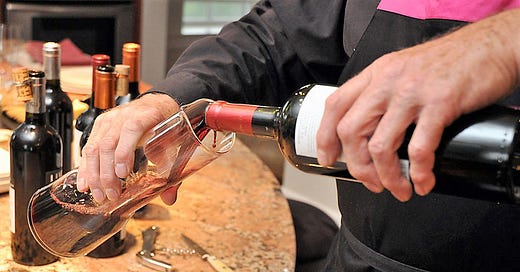This exclusive material is only available in full to paid subscribers. If you are a paid subscriber, please consider giving a gift subscription to a friend. If you are a free subscriber, please consider a full subscription.
Wine faults
You salivate in anticipation of the delicious steak/bird/fish and pour a special bottle for the occasion. Then, yikes, a hobgoblin grabs your nose. Burnt matches. Wet cardboard. Freshly deposited stuff in a barnyard.
In a restaurant, do you demand a refund? At home, do you curse your local wine shop? Or do you shrug and drink it anyway, thinking this is how “good wine” is supposed to taste. To help, a list of wine fault signs and causes, including what may seem to be faults but are not.
• Little crystals—“whine diamonds.” These are tartrates that can appear when wines are not cold stabilized. Natural winemakers eschew cold stabilization because they believe the process reduces complexity. Crystals are harmless, you can filter them out and drink away. Or simply ignore and drink away.
• Cloudiness and/or sediment: suspended proteins that were not filtered out. Some winemakers assert filtering dampens wine character. Sediment is not a fault. Decant/filter and enjoy the complexity.
Keep reading with a 7-day free trial
Subscribe to Gus Clemens on Wine to keep reading this post and get 7 days of free access to the full post archives.





